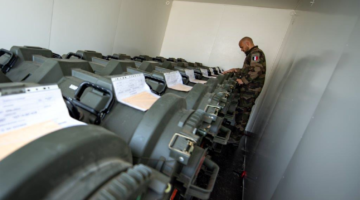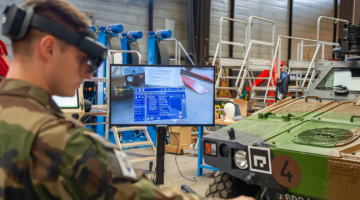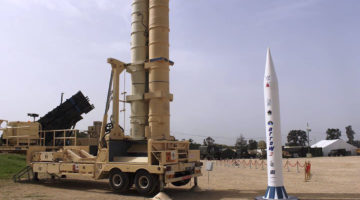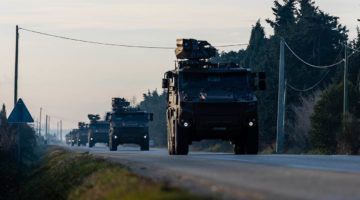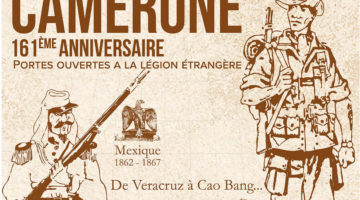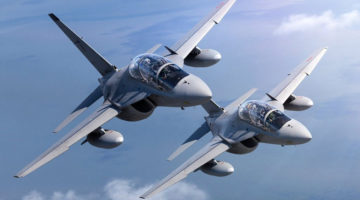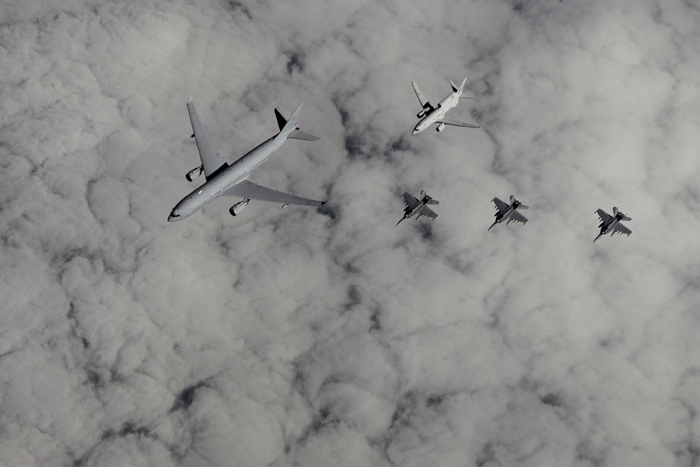The Royal Australian Air Force (RAAF) is in the throes of transformation.
Former RAAF, Air Vice-Marshal (Ret.) John Blackburn, now the Deputy Chairman of the influential Australian think tank, the Institute for Regional Security)and Deputy Chair at the Williams Foundation, highlighted the nature of the change.
“Prior to the current modernization program, the RAAF would need several months warning time before they could assemble a strike force. And they did not have the logistic capability to support that force at long distance from Australia.
Contrast that to today where in the current Middle East deployment, in a matter of weeks, the forces were able to respond rapidly and to deploy against the threat. And they have an ability to provide the complete logistical support as well to the force. The C-17 and the KC-30As have been crucial to this effort, and is why the government is seeking to acquire additional C-17s and KC-30As as well.
It is a mindset as well as capability change as well. In today’s world you are not going to have six months warning with that amount of time to respond. You need forces that can be gathered together rapidly and deployed as a package.
Our government wants to insert forces rapidly to deal with crises; not to have to wait for a long period to deploy. We don’t want to respond to the PM’s request to deploy with: “Call us in six months, and we will let you know when we are on our way. Governments want real options; not a recorded message.”
The self-deployment to Iraq by the RAAF has been facilitated by the ability to leverage their new A330MRTT tankers. In an interview in January 2015, the commander of the Air Mobility Group (AMG), Air Commodore Warren McDonald provided an assessment of the key role of the AMG in the transformation of the RAAF.
“AMG now has considerable capacity, sustainability, speed and reach. The sheer capacity of our Air-to-Air Refueling (AAR) assets and heavy lift platforms has fundamentally changed the landscape of Air Mobility within Air Force.
The movement of the RAAF from Australia to Iraq was a defining moment for the RAAF and really the first time we self deployed an air combat package, equipment and personnel over such a long distance and in such a short period of time. The maturing of the KC-30A was the game changer, in conjunction with our heavy lift fleet.”
The operational deployment accelerated as well the process of certifying the KC-30A to refuel aircraft other than the RAAF F-18s. As a result of the pressures of operations, the KC-30A has now been certified with a number of aircraft, prior to boom certification:
- USN F/A-18E/F/G
- USN EA-6B
- USMC F/A-18C/D
- USMC AV-8B
- FAF Rafale
- RAF EF 2000 Typhoon
- RAF Tornado GR4
- RCAF CF-18
- RSADF Tornado IDS
The RAAF provided details on the KC-30A deployment to the Iraqi theater. According to the RAAF, two KC-30A deployed six F/A-18F 21 Sep 14 and arrived in theater 23 Sep 14. One KC-30A remained in theatre while the second aircraft returned to Australia to continue a further Air Mobility Support deployment in support of Operation Okra.
The KC-30A typically flies two missions per day and is being well reported by coalition. Approximately 50 people are deployed in support of the Air Mobility Task Unit which represents a lean support element in theater
And As of 8 Jan 14, the RAAF KC-30As have operated and contributed as follows:
- 108/110 flown/tasked (98% completion). 100% maintenance success as two uncompleted sorties were due other reasons.
- 6 hours flown
- Fuel offloads averaged 2.5 million pounds each in Oct and Nov, and this increased to 3.3 million pounds in Dec.
- Total fuel offload of 8,529,139 lbs.
It should be noted that the RAAF is not the only Air Force operating the Airbus 330MRTTs in the operations. The Royal Air Force has deployed their version during the operation and as of mid-December; the RAF Voyager fleet had flown over 100 sorties, 700 flying hours and provided over 4 million liters of fuel, which has been transferred to RAF, US Navy, French Air Force and Royal Canadian receivers. The UAE and Saudi Arabia also have A330 MRTT tankers.
According to Air Commodore McDonald:
Operation Okra has accelerated the maturing process of the KC-30A.
At the end of 2013, the squadron was transferred from a project focused Transition Team to Number 86 Wing – and in doing so was placed directly into the hands of the war fighter. In 2014 the Wing, in conjunction with the project office, addressed the training and key operational issues that were preventing the full utilization of the KC-30A.
The shift in operational focus, as a result of transferring the KC-30A to the Wing, is reflected in the increase in AAR from 40% to 75%.
The deployment to the Middle East has also accelerated the certification of aircraft able to be tanked by the KC-30A.
In three months, we have dramatically increased the number of aircraft certified.
This would not have happened without the press of events and the operational tempo associated with the deployment.
It is the tanker of choice in Iraq we are being told by coalition partners.
Credit Photo: KC-30A flying with other RAAF aircraft. RAAF

